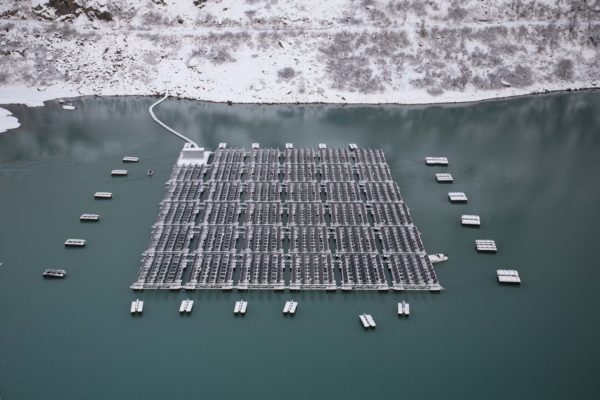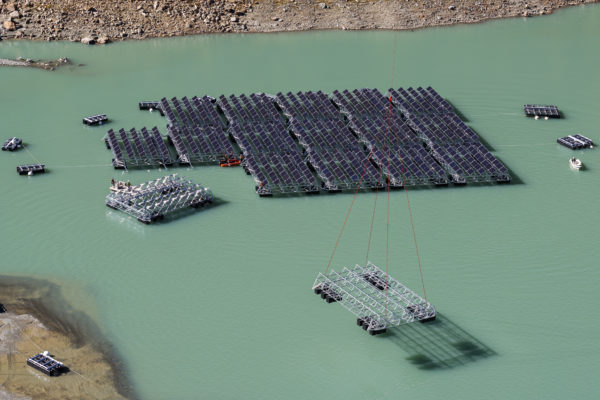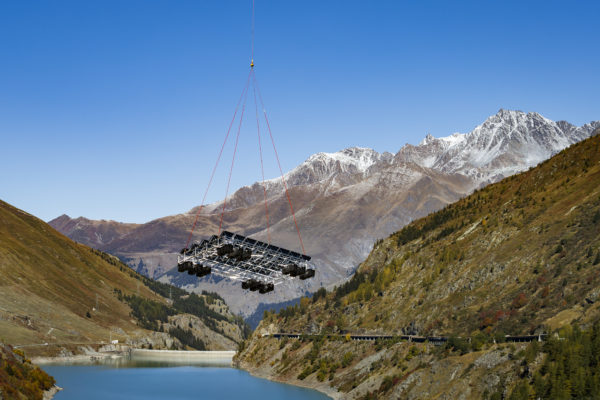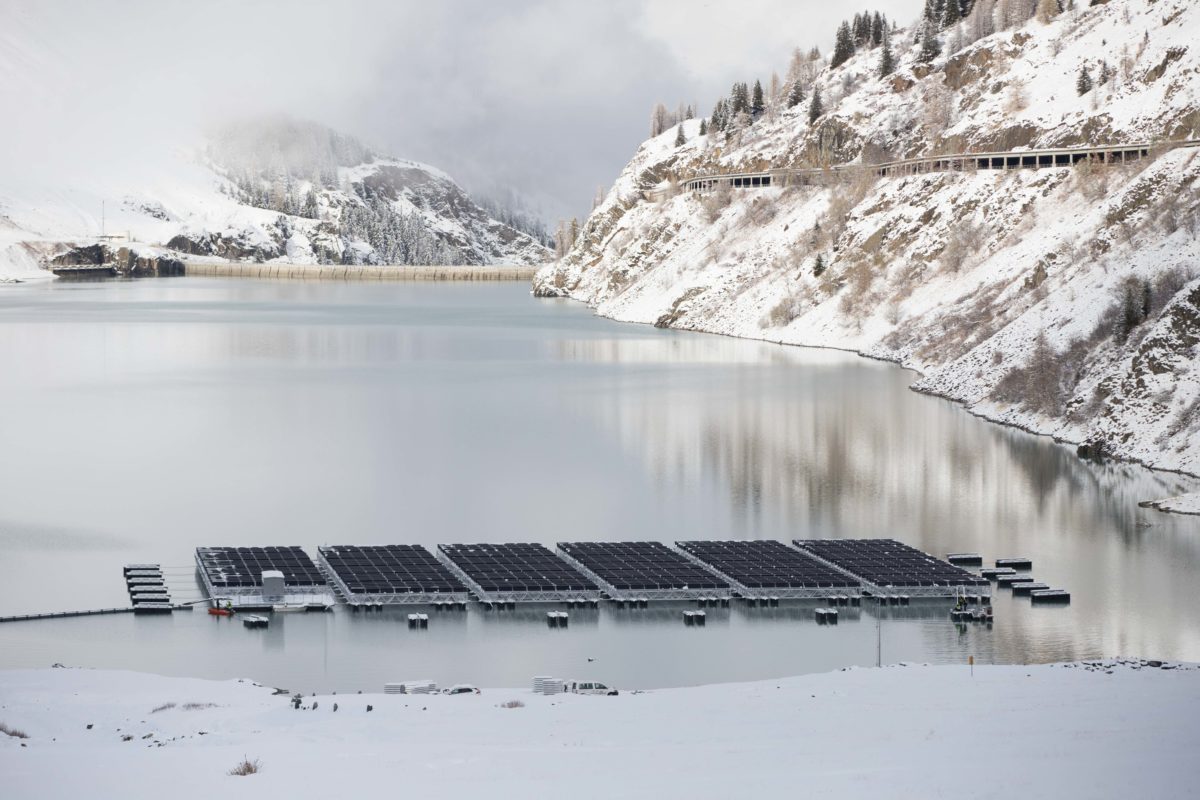Swiss energy provider Romande Energie is set to finish building a 448 kW grid-connected floating PV system on the surface of Lac des Toules, a reservoir located at an altitude of 1,810 meters in the Swiss Alps.
“All floating structures are now installed on the water, but the last elements must be installed before commissioning,” a spokeswoman told pv magazine.
Romande Energie added that the pilot project, which was developed in partnership with the local municipality of Bourg-St-Pierre, is actually part of a broader plan to deploy a large floating solar park on the reservoir by the end of 2021. In 2013, the two entities started testing PV technology at this altitude through a small, lakeshore pilot, which allowed them to test different types of solar panels and designs for the project.
Higher yield
The company claims the facility will have an energy yield that could be up to 50% higher than that of ground-mounted PV plants deployed on flat land. This can be explained by the strong reflection of light on the snow, which increases the efficiency of solar panels, the company stated. The plant is also expected to operate under harsh weather conditions, as the surface of the lake will be frozen in the winter months.
The CHF 2.35 million ($2.37 million) project was approved by the Canton of Valais in September 2017 and is entitled to a feed-in tariff under Switzerland’s incentive scheme for renewables.
Popular content
The floating array relies on 1,400 bifacial modules provided by an unnamed manufacturer and 36 floating structures made of aluminum and high-density polyethylene, which are linked to the bottom of the reservoir with weights and are able to rise and fall depending on the water level. One of the floating structures will host the central inverter and the transformer, while the remaining 35 platforms will each host 40 solar modules.
Alpine patent
Romande Energie now plans to patent the innovative solutions it claims to have developed for the construction of floating PV systems in Alpine environments. “We are cooperating with companies specializing in these matters,” the company said.
A recent study by Switzerland’s WSL Institute for Snow and Avalanche Research SLF and the Swiss Federal Institute of Technology in Lausanne highlighted the potential of PV systems in high Alpine regions. They claimed that such systems can reduce seasonal reductions in power generation during the winter due to fog, clouds and lower solar radiation.
“Such mountain installations require significantly less surface area and, combined with steeper panel tilt angles, up to 50% of the winter deficit in electricity production can be mediated,” the researchers said.
This content is protected by copyright and may not be reused. If you want to cooperate with us and would like to reuse some of our content, please contact: editors@pv-magazine.com.



By submitting this form you agree to pv magazine using your data for the purposes of publishing your comment.
Your personal data will only be disclosed or otherwise transmitted to third parties for the purposes of spam filtering or if this is necessary for technical maintenance of the website. Any other transfer to third parties will not take place unless this is justified on the basis of applicable data protection regulations or if pv magazine is legally obliged to do so.
You may revoke this consent at any time with effect for the future, in which case your personal data will be deleted immediately. Otherwise, your data will be deleted if pv magazine has processed your request or the purpose of data storage is fulfilled.
Further information on data privacy can be found in our Data Protection Policy.